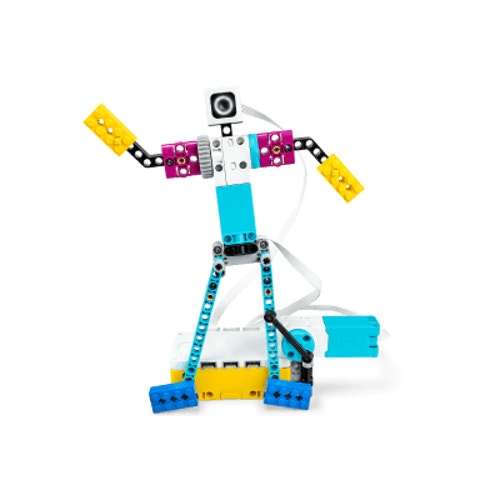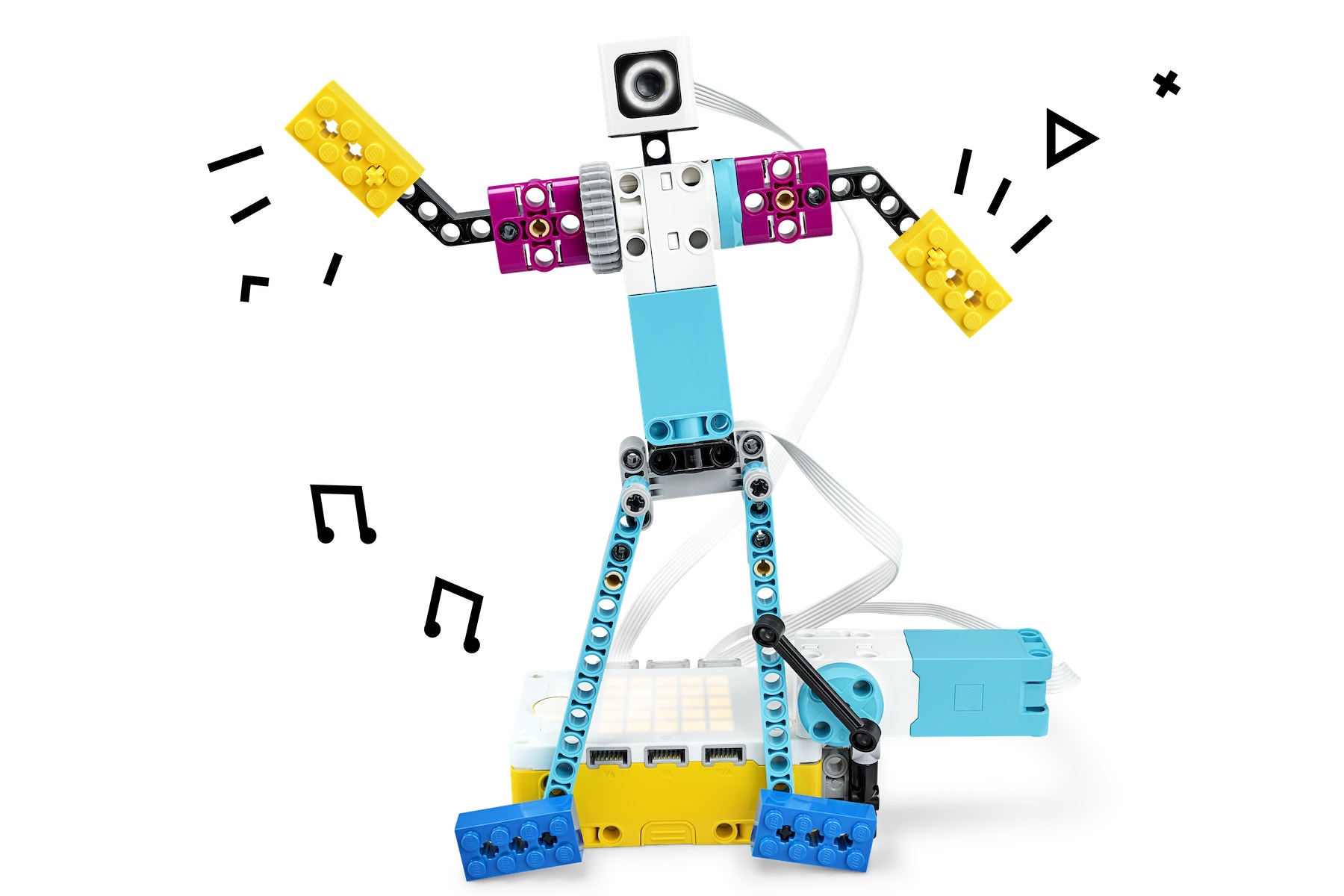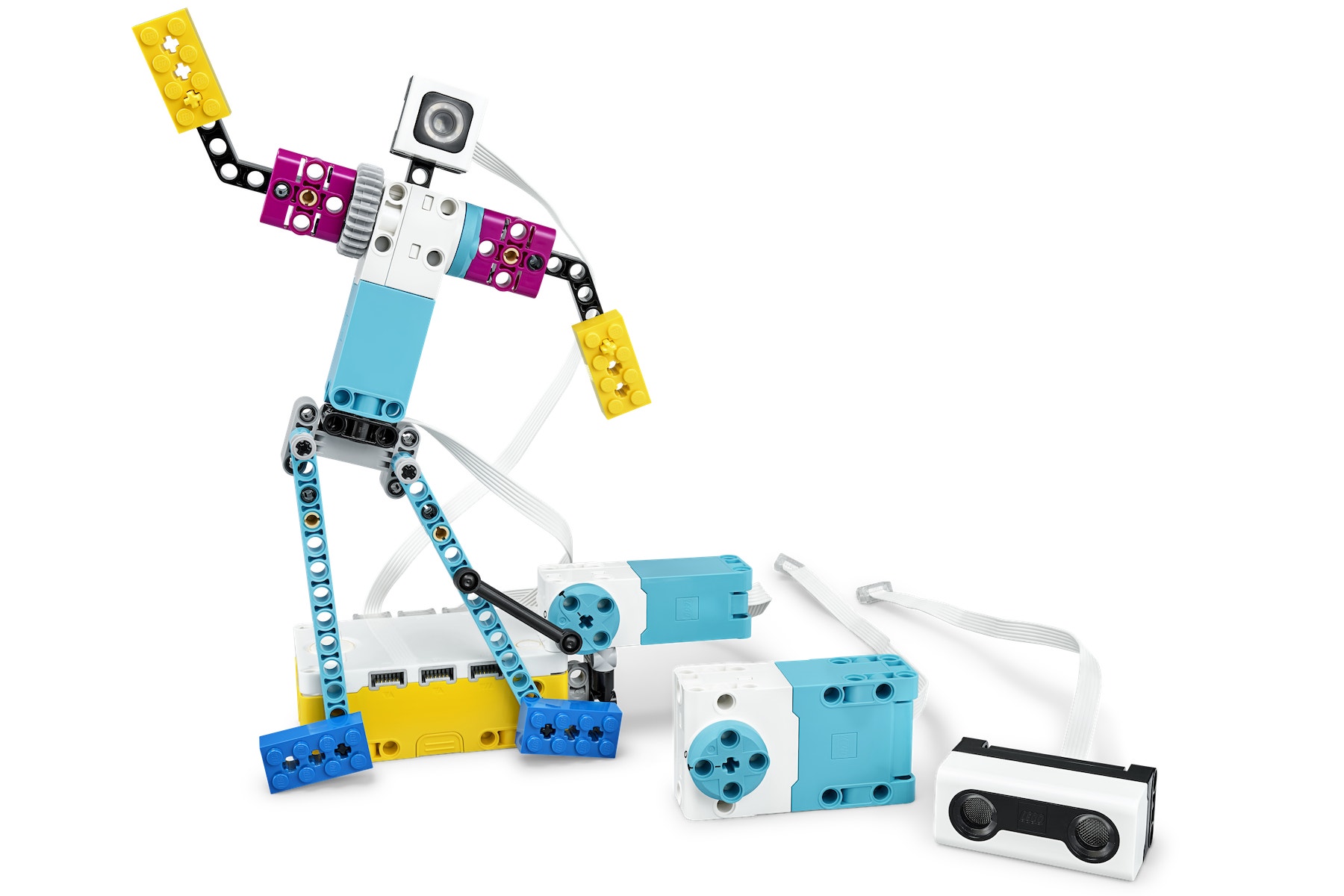Break Dance
Synchronise the motor movements of a ‘break dancer’ to keep in rhythm with light and beats.

Lesson plan
1. Prepare
- Read through the pupil material in the LEGO® Education SPIKE™ App.
- If you feel that it's necessary, plan a lesson using the getting started material in the app. This will help to familiarise your pupils with LEGO® Education SPIKE™ Prime.
2. Engage (5 Min.)
- Use the ideas in the Ignite a Discussion section below to engage your pupils in a discussion relating to this lesson.
- Use the video to explain the lesson.
3. Explore (20 Min.)
- Have your pupils work in pairs to build the ‘break dancer’.
- Ask them to experiment with timing, syncing the motion of the dancer’s legs with the blinking light on the Hub.
4. Explain (5 Min.)
- Talk about synchronising movement.
- Have your pupils add movement to the dancer's arms.
5. Elaborate (15 Min.)
- Ask your pupils to add some beats that are in time with their dancer's moves.
- How many sounds can they sync?
- Now have them program their dancers to move at regular intervals (e.g. every 30 seconds). Point out that this is meant to remind them to get up and dance!
- Don't forget to leave some time for tidying up.
6. Evaluate
- Give feedback on each pupil's performance.
- In order to simplify the process, you can use the assessment rubrics that have been provided.
Ignite a Discussion
Start a discussion about the importance of moving and exercising throughout the day. Ask relevant questions. Here are some examples:
How often should you stand up and move if you're spending a lot of time sitting down?
What types of exercise could you do in order to keep moving?
Are you taking breaks throughout the day or do you sometimes forget?
Have your pupils watch this video to see what they're about to do.

Building Tips
Partner Build
Split each team's building tasks in order to ensure that everyone is actively involved.
- Pupil A: top of the break dancer
- Pupil B: bottom of the break dancer

Things to Sync
Syncing movement means that every move follows the rhythm. For example, everything takes one second to complete, which is often the case in music or dance.
There are various things to be synced in this lesson.
1. Movement of the legs
2. Movement of the arms
3. Blinking of the pixels on the Light Matrix
4. Different sounds and notes

Add More Functions
Adding a third motor and an Ultrasonic Sensor will give your pupils more things to sync. For example:
- Movement of a third element
- Blinking of the Distance Sensor Light

Make It Your Own
Have your pupils add bricks to personalise their dancers.
Coding Tips
Main Program

Possible Solution

Other Programs

Differentiation
Simplify this lesson by:
- Exploring the functions of the motor and how to control it using different units (e.g. motor run for seconds, for degrees, for rotations), use the Motors and Sensors getting started material to help you
Take this lesson to the next level by:
- Having the teams sync their models to create a flash mob
Assessment Opportunities
Teacher Observation Checklist
Establish a scale that suits your needs, for example:
- Partially accomplished
- Fully accomplished
- Overachieved
Use the following success criteria to evaluate your pupils' progress:
- The pupils understand the concepts of rhythm, timing and synchronisation.
- The pupils accurately observe the ‘break dancer’ and make efficient corrections to their programs.
- The pupils build an understanding of the functionality of the ‘break dancers’ so that they're able to program new rhythms following new beats in a short amount of time.
Self-Assessment
Have each pupil choose the brick that they feel best represents their performance.
- Blue: I've programmed the dancer’s legs to move in sync with the light.
- Yellow: I've programmed the dancer’s legs and arms to move in sync with the light.
- Violet: I've programmed the dancer to move at regular intervals, playing some beats to keep me moving.
Peer-Assessment
Encourage your pupils to provide feedback to one another by:
- Having one pupil use the coloured brick scale above to score another pupil’s performance
- Asking them to present constructive feedback to one another so that they can improve their group’s performance during the next lesson

Language Arts Extension
To incorporate the development of language arts skills:
- Have the pupils research and discuss why it's important to get up and move at regular intervals when sitting for long periods of time in class, at the computer, watching TV, playing video games, etc.
Note: This will require additional time.
Maths Extension
To incorporate the development of maths skills:
- Have your pupils explore or explain beats in terms of fractions.
- Have them play polymetric beats (e.g. 2/4 with 3/8, 5/4 with 4/4).
Note: This will require additional time.
Career Links
The pupils who enjoyed this lesson might be interested in exploring these career pathways:
- Healthcare Science (Biomedical)
- Healthcare Science (Medical and Health Careers)
Teacher Support
The pupils will:
- Effectively use different data types such as time (seconds), speed and degree of rotation
LEGO Education SPIKE Prime Set
CAS Computing Progression Pathways
Algorithms:
Uses diagrams to express solutions. (AB)
Designs solutions by decomposing a problem and creates a sub-solution for each of these parts. (DE) (AL) (AB)
Programming and Development:
Selects the appropriate data types. (AL) (AB)
Designs, writes and debugs modular programs




